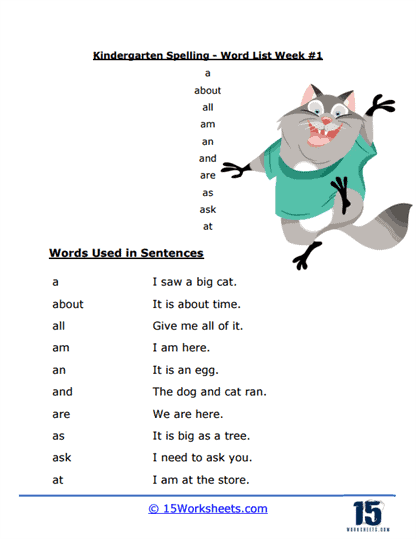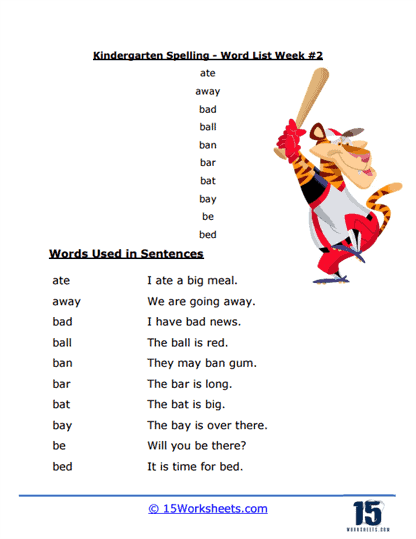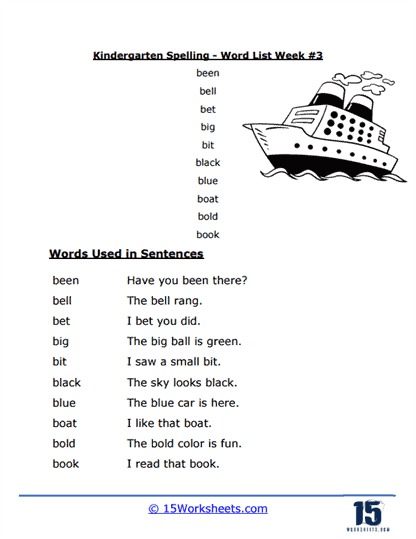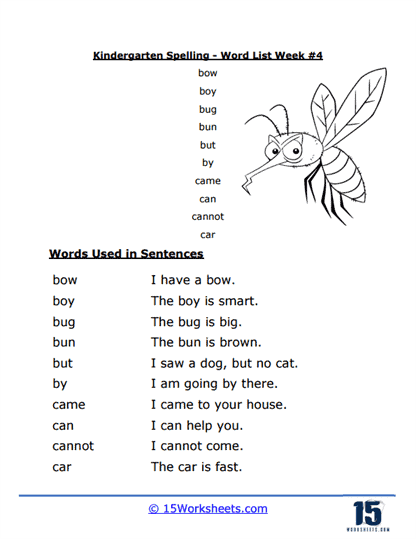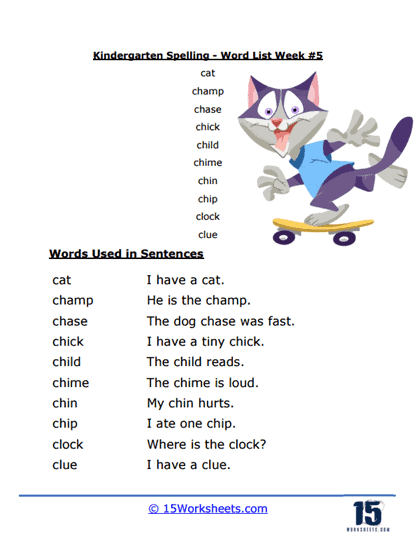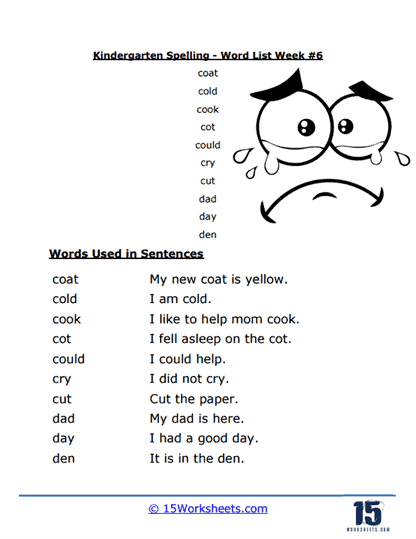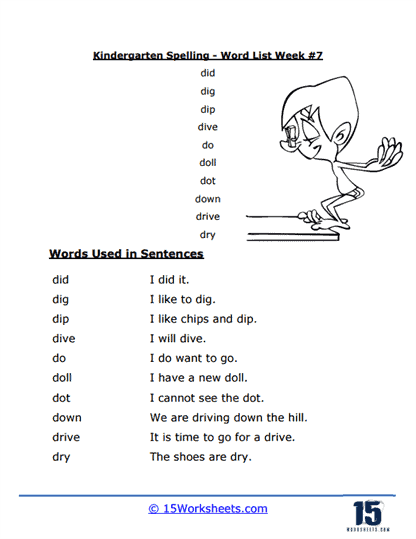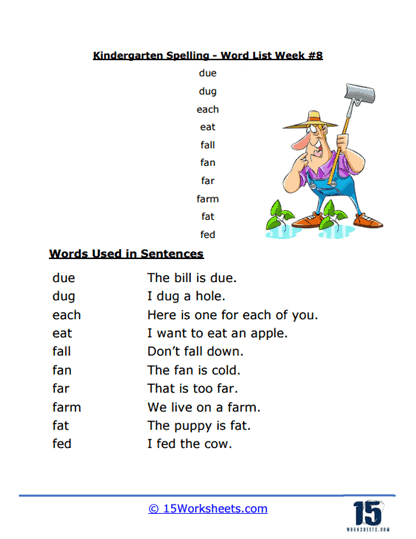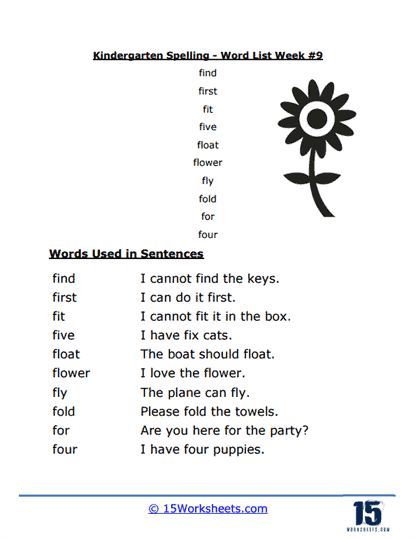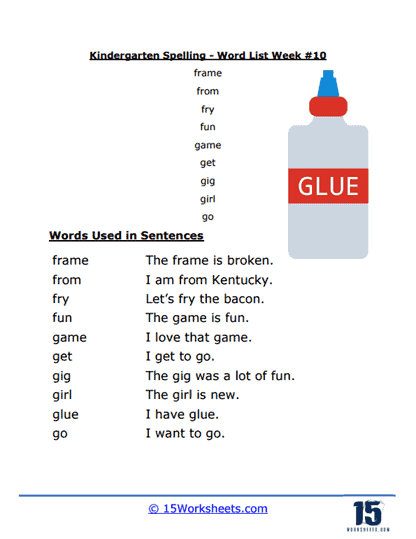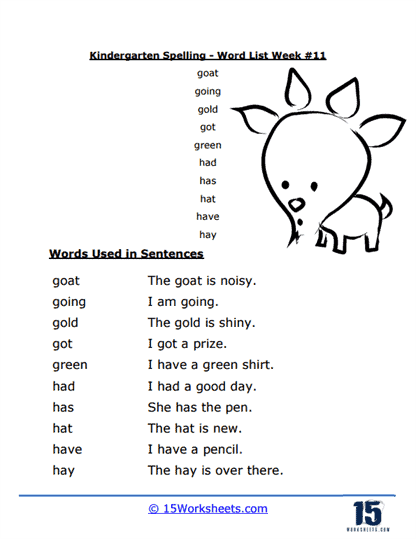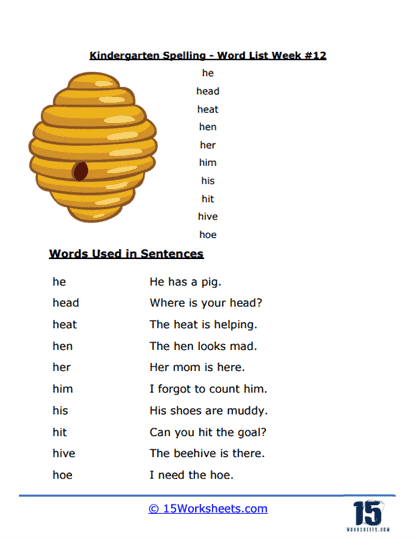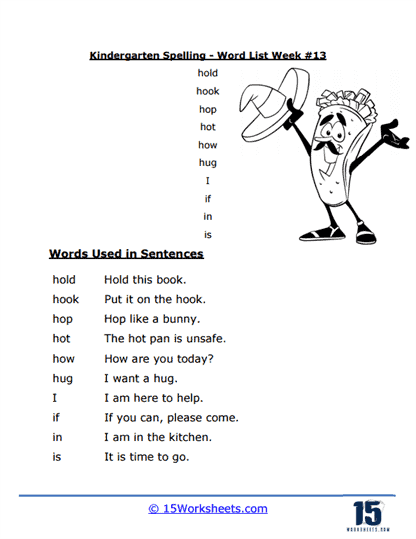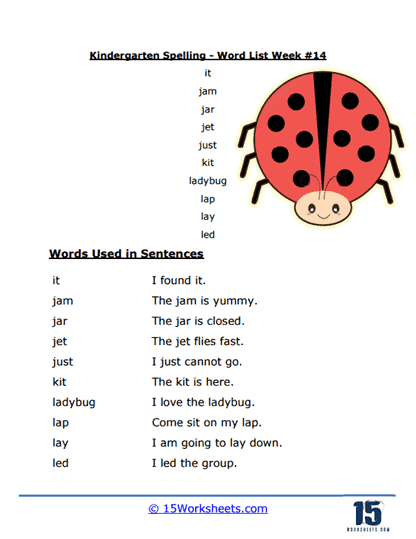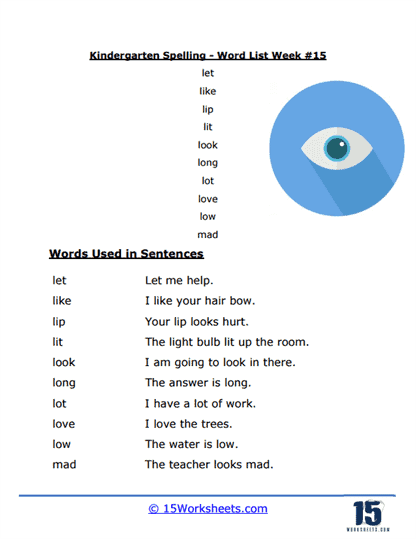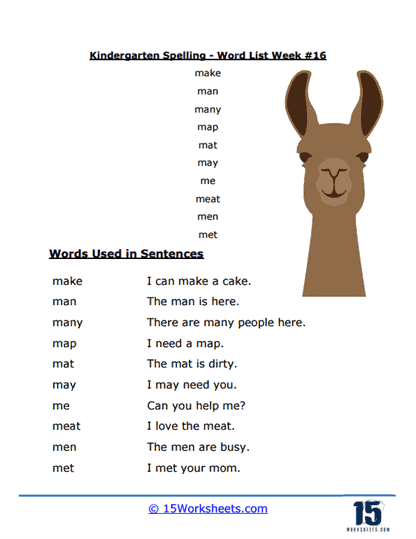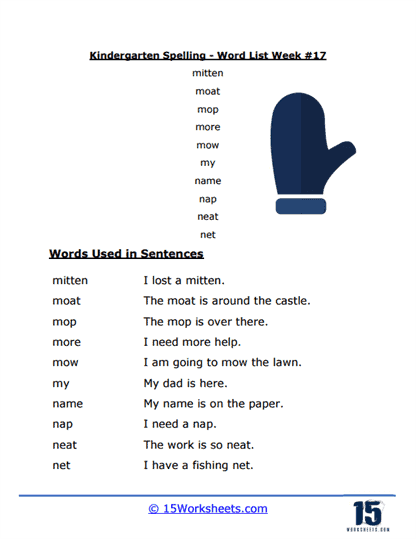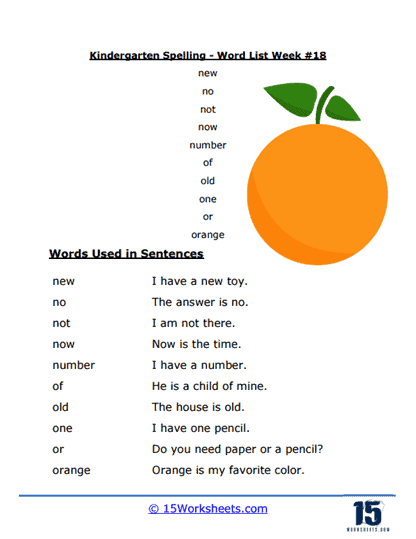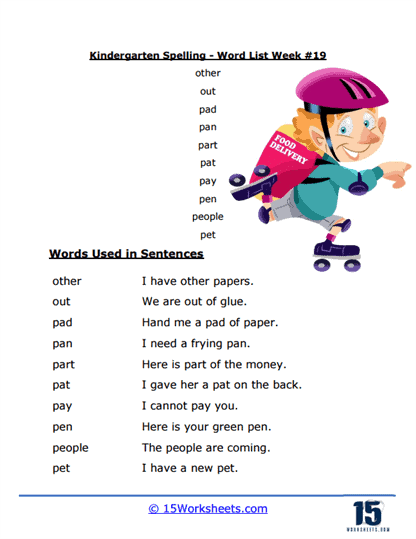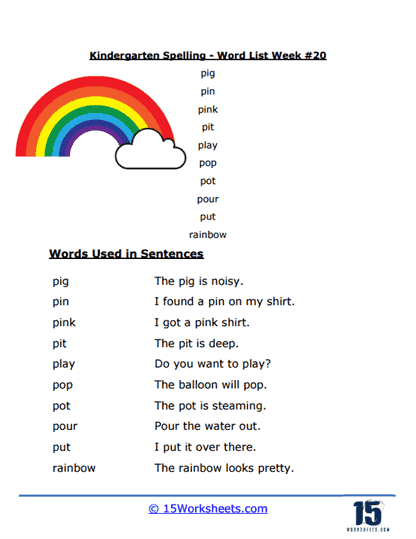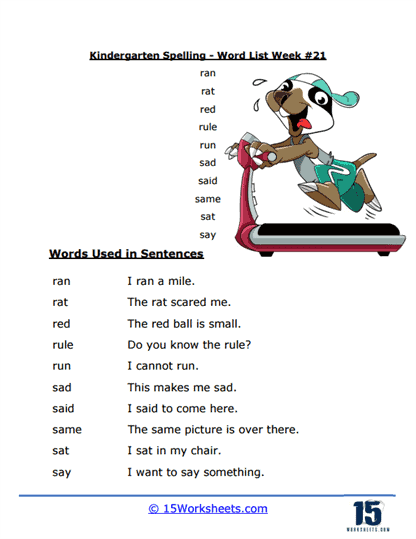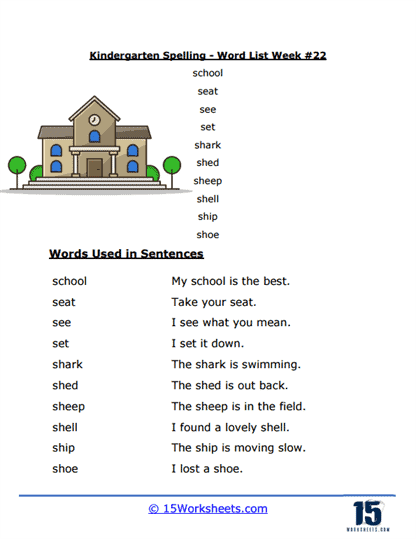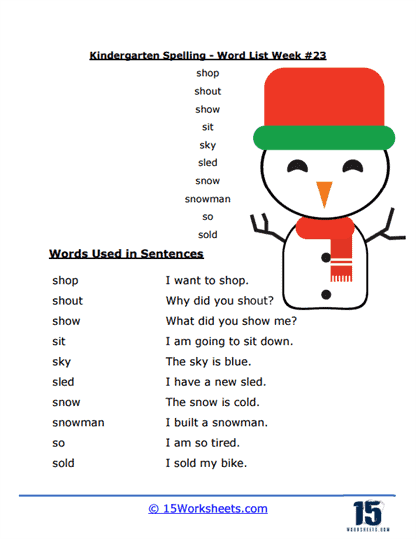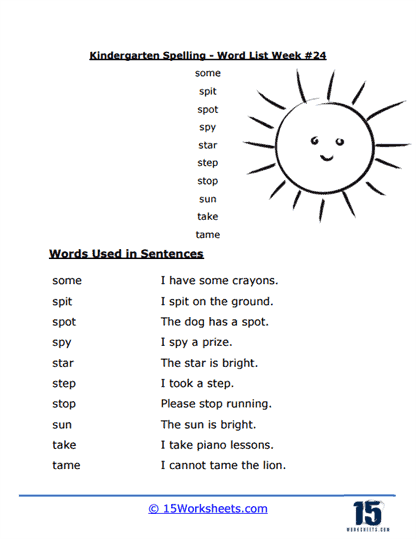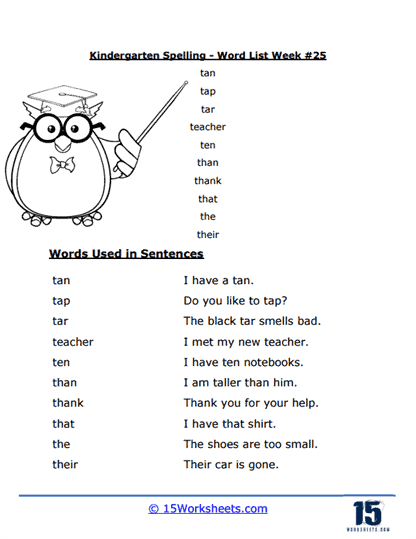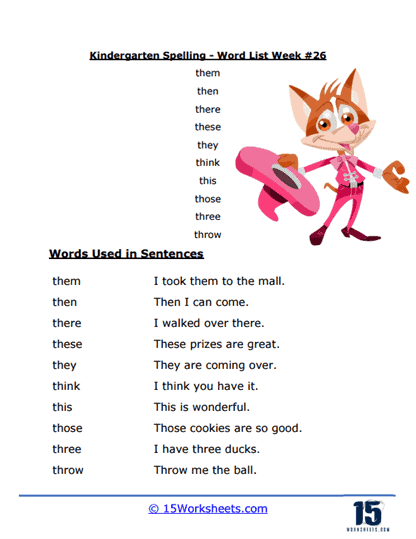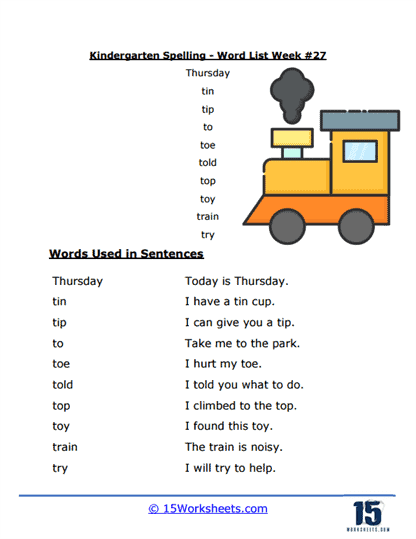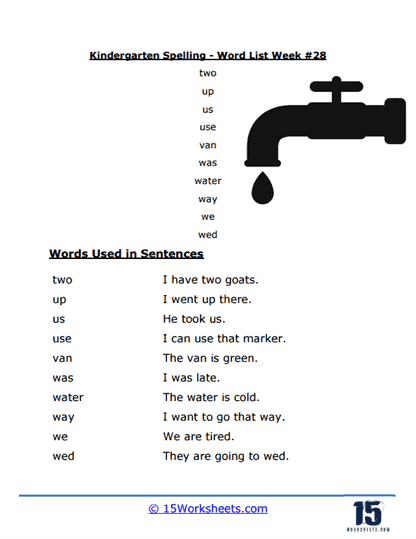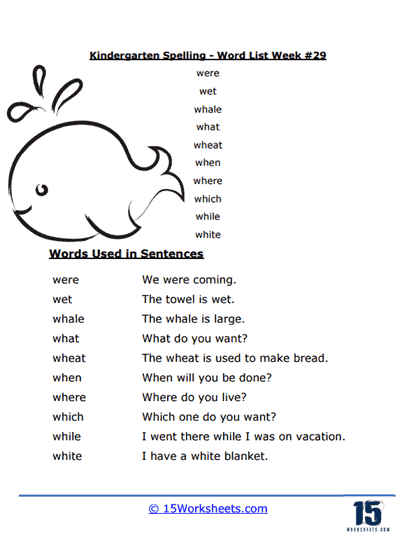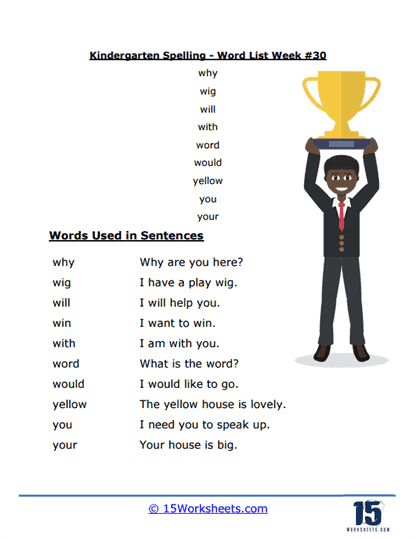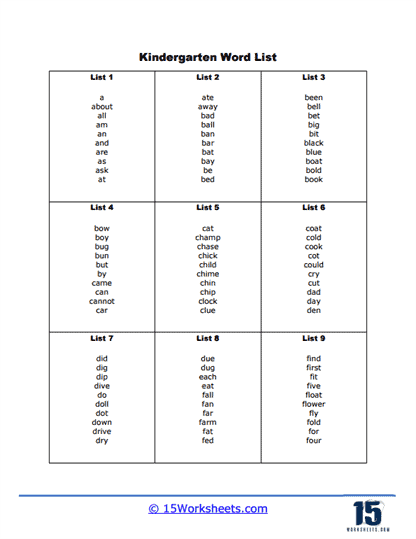Spelling Words Worksheets
About These Worksheets
Teaching kindergarten kids how to spell using weekly spelling lists can be an effective way to build their foundational literacy skills in an engaging and structured manner. These worksheets serve as a fundamental tool in early childhood education, aiming to lay the groundwork for literacy development among young learners. These worksheets are meticulously designed to introduce and reinforce spelling skills through a variety of engaging exercises, tailored to meet the cognitive and developmental needs of kindergarten-aged children.
By integrating spelling practice with basic math concepts, these worksheets not only enhance literacy skills but also foster an understanding of fundamental mathematical operations. This comprehensive exploration delves into the essence of Kindergarten Spelling Words Worksheets, the array of exercises they encompass, and their role in promoting a dual educational objective: literacy and numeracy development.
These worksheets focus on teaching young learners the correct spelling of words that are appropriate for their age and developmental stage. The words selected typically reflect everyday vocabulary, sight words (words frequently encountered in text), and simple words that adhere to phonetic rules. The primary aim is to build a strong foundation in spelling, which is crucial for reading proficiency and effective written communication. These worksheets are characterized by their user-friendly layout, engaging content, and a gradual increase in complexity to match the evolving skills of kindergarten students.
Types of Exercises
1. Matching Words to Pictures
This exercise involves students matching words to corresponding images, which helps in word recognition and enhances vocabulary. It bridges the gap between visual cues and their verbal counterparts, solidifying the connection between objects and their names.
2. Fill-in-the-Blanks
Fill-in-the-blank exercises provide sentences or phrases with missing words, which students must complete using the correct spelling word. This practice not only reinforces spelling but also aids in understanding word usage within contexts.
3. Word Puzzles
Word scrambles challenge students to rearrange letters to form the correct word. This exercise enhances cognitive skills like problem-solving and critical thinking, as students must recall the correct spelling to succeed.
Designed for beginners, these puzzles use simple clues that lead to the spelling words. Solving crossword puzzles encourages logical thinking and helps in memorizing the spelling and meaning of words.
Word searches are fun, puzzle-like activities where students find and circle words hidden in a grid of letters. This exercise improves pattern recognition, attention to detail, and reinforces spelling in an enjoyable manner.
4. Sentence Creation
Students use spelling words to construct their own sentences, promoting creativity and application of vocabulary in writing. This exercise demonstrates comprehension and encourages the practical use of spelling words in communication.
Tips for Spelling Difficult Words
Learning to spell correctly is one of the ongoing challenges for students. There are thousands of words in the English language. It is difficult to remember the pronunciation and spelling of complicated words. Most often, people remember the correct spelling of the words they use in daily conversations at work or at home. If you want to learn to spell words correctly, we have some helpful tips for spelling difficult words.
You may not be alone if you get stuck spelling a complicated word. There are many English language speakers and writers who face the same problem. Learning to spell most words correctly may be possible, but memorizing all the words of the language may not be easy.
Word Chunking
If you struggle to spell long words, chunking is one of the easiest ways to learn to spell them correctly. Word chunking refers to breaking down long words into smaller chunks. You can learn to spell each chunk and combine them to spell the word. There are many complicated words in the English language. They can be challenging to memorize and spell out.
To try the chunking method, consider the word “Catastrophe.” Learning to spell the whole word can be overwhelming. However, if you split it into smaller pieces, you may get something like Cat-Astro-Phy. Now, you can learn to spell the three chunks separately and combine them.
Look, Cover, Write, Check
One of the most effective techniques to learn to spell correctly is using the look, cover, write, check method. This method can take the hard-to-spell words and quickly research them. You can look up their meaning in the dictionary, cover examples to find out how to use them, write them down, and check their correctness.
Following this process can help you memorize the spelling accurately. You can also use the new words in your daily conversations (when applicable) to improve your learning.
Spelling Rules
It never hurts to learn some of the basic spelling rules in the English language. Many words change their spelling when you use them in different forms. If you know the rules of changing the spelling, you can learn to spell correctly in no time. For example, consider the word “Party.” If you want to use the plural, you must replace the ‘y’ with ‘ies.’
Similarly, you will have to replace the ‘y’ with ‘ies’ in the word “Fry” using the plural form. Learning to replace the letters correctly can help you learn the spelling of different forms of the same word.
Commonly Misspelled Words
There are several words in the English language that most writers and speakers misspell. You can create a list of these words and focus on spelling them correctly. Such words often have one or two recurring letters, making it difficult to memorize them. You can improve your spelling skills daily by taking one word at a time.
Some commonly misspelled words include interrupt, across, immediate, bureau, severe, foreign, believe, receive, etc.
Word Sounds
This technique is similar to word chunking. You can split the words into smaller pieces and sound them out individually. An easy way to do it is by chunking the words on paper. Once done, you can say each part loud to understand how it sounds.
For example, by chunking the word “Catastrophe” into Cat-Astro-Phy, you can learn the sounds of each chunk. These sounds can help you remember the correct spelling of the word.

